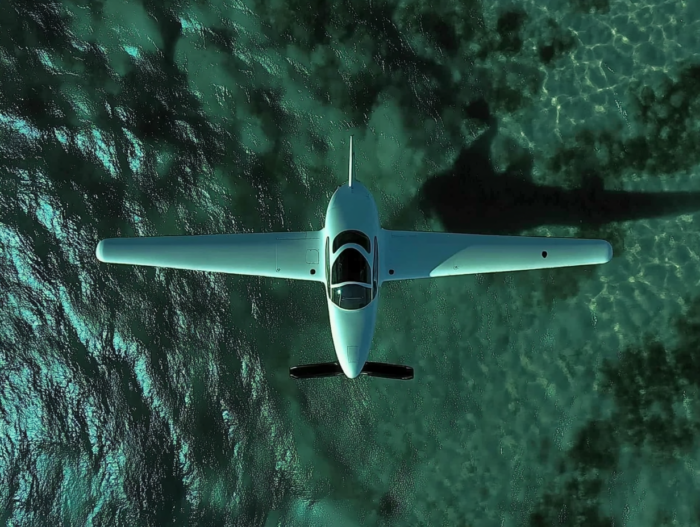Earning a Private Pilot License (PPL) is a transformative accomplishment—one that opens a world of new possibilities in both travel and personal growth. Whether you dream of spontaneous weekend getaways, exploring hidden airstrips, or giving back to your community, your new license will serve as a key that unlocks these opportunities. Yet many pilots find themselves wondering what comes next after that initial burst of excitement. If you’re eager to make your time in the cockpit as fulfilling and adventurous as possible, here are a few ways to stretch your wings and truly make the most of your PPL.
One of the greatest perks of being a licensed pilot is the freedom to create your own travel narratives. Rather than relying on commercial routes or sticking to the usual road trip itinerary, you can plan an excursion to a smaller municipal airport in a neighboring state or hop over to a coastal destination for a day trip. From mountain towns to island runways, the ability to land in places off the beaten path transforms a mere journey into a genuine adventure. These shorter cross-country flights sharpen your navigation skills and weather planning, all while treating you to sweeping panoramas of terrain you might never see from the highways below.
For pilots looking to immerse themselves in the wider aviation community, fly-in events offer a friendly and vibrant atmosphere. Often hosted at local airports or aviation gatherings, these meetups attract both seasoned aviators and newcomers, creating an ideal environment for shared learning and camaraderie. You might discover new aircraft types, find valuable tips for safe flying, or even make lifelong friends who share your enthusiasm for flight. Many of these gatherings feature seminars, barbecues, and aircraft showcases, ensuring that each visit offers a well-rounded experience of both fun and education.
Of course, holding a PPL doesn’t mean your days of study and skill development are behind you. In fact, it can be just the beginning of a much bigger journey. Expanding your abilities through additional training—such as an instrument rating, multi-engine rating, or seaplane rating—presents an opportunity to fine-tune your airmanship and broaden your horizons. Instrument training, for instance, builds confidence in low-visibility conditions and opens the door to more reliable cross-country flying. A multi-engine rating introduces you to larger, faster aircraft with greater range, while a seaplane rating brings the thrill of water takeoffs and landings. Adding these advanced qualifications not only keeps you intellectually engaged but also helps maintain a high standard of safety and proficiency in the cockpit.
Staying current shouldn’t feel like a chore, either. Every pilot must complete a flight review every two years, but rather than seeing it as an obligation, treat it as a chance to refresh and refine skills you might not use every day. During these reviews, you can request guidance on specific maneuvers, emergency procedures, or radio communications that may have become rusty. By using this time to target areas for improvement, you’ll emerge with renewed confidence and a stronger foundation as a pilot.
Another effective way to stay engaged in aviation is by joining a flying club. These clubs typically offer shared access to a fleet of well-maintained aircraft, making flying more cost-effective and socially rewarding. Clubs often host group fly-outs, educational workshops, and social events that foster friendships and mentorship opportunities. The diversity of experience levels within a club means that newer pilots can gain insights from veterans, while seasoned aviators can share their wisdom and passion with the next generation.
Volunteering your skills is yet another avenue for turning your PPL into something deeply meaningful. Organizations such as Angel Flight, Civil Air Patrol, and Pilots N Paws give licensed pilots the chance to support humanitarian and rescue missions. Whether you’re transporting patients for medical appointments, delivering essential supplies to disaster zones, or relocating animals in need, you’ll be using your training for a cause that extends far beyond the thrill of flying. These flights are often emotionally rewarding and can significantly broaden your perspective on the many ways aviation can benefit others.
Don’t overlook the simple pleasure of experimenting with new aircraft types, either. If you initially trained in a basic trainer with minimal avionics, consider renting more advanced airplanes equipped with glass cockpits or trying vintage tailwheel aircraft. The unique handling characteristics and performance quirks of different planes will keep you engaged and continually learning. Each new aircraft pushes you to adapt your techniques and refine your piloting skills, ensuring that flying never becomes stale.
For the truly intrepid pilot, a PPL can even pave the way for international flying experiences. With some preparation and possibly a validation process, you may be able to rent planes abroad and explore foreign landscapes from above. Navigating new rules, unfamiliar airspace, and different airports can be both challenging and rewarding, serving as a captivating twist on the usual notion of travel.
Technology, too, plays an increasingly significant role in aviation. Staying current with advancements such as electronic flight bag (EFB) applications, real-time weather forecasting, and traffic avoidance systems can enhance both safety and convenience. Many of these modern tools simplify flight planning, offer advanced terrain and route mapping, and alert you to potential hazards like weather fronts or nearby aircraft. Embracing these innovations can streamline your operations and help you become a more informed pilot overall.
Finally, don’t underestimate the joy of sharing your passion. Inviting friends or family on a short trip can transform a routine flight into a memorable occasion. Seeing the wonder on their faces as they witness a sunset from 3,000 feet or spot local landmarks from a bird’s-eye view can rekindle your own sense of awe. By showcasing general aviation to those who are less familiar with it, you become an ambassador for flight and help foster a culture that appreciates the beauty and practicality of small aircraft travel.
Ultimately, a Private Pilot License is much more than a piece of plastic authorizing you to operate an airplane. It’s an invitation to dream bigger, continuously learn, and shape your own adventures in the sky. Whether you delve deeper into advanced ratings, volunteer your skills, or set off to explore distant runways, the possibilities truly are endless. Embrace every opportunity to challenge yourself, connect with the aviation community, and marvel at the world below. In doing so, you’ll discover that each takeoff and landing becomes part of a broader story—one you’re writing in the open skies.




